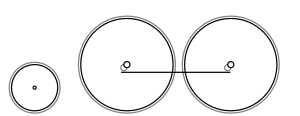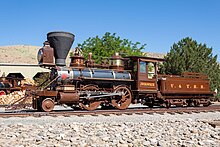
Under the Whyte notation for the classification of steam locomotives, 4-6-2 represents the wheel arrangement of four leading wheels on two axles, six powered and coupled driving wheels on three axles and two trailing wheels on one axle. The 4-6-2 locomotive became almost globally known as a Pacific type after a locomotive built by the Baldwin Locomotive Works in Philadelphia was shipped across the Pacific Ocean to New Zealand.

Under the Whyte notation for the classification of steam locomotives, 0-4-0 represents one of the simplest possible types, that with two axles and four coupled wheels, all of which are driven. The wheels on the earliest four-coupled locomotives were connected by a single gear wheel, but from 1825 the wheels were usually connected with coupling rods to form a single driven set.

0-6-0 is the Whyte notation designation for steam locomotives with a wheel arrangement of no leading wheels, six powered and coupled driving wheels on three axles, and no trailing wheels. Historically, this was the most common wheel arrangement used on both tender and tank locomotives in versions with both inside and outside cylinders.
The London, Midland and Scottish Railway had the largest stock of steam locomotives of any of the 'Big Four' Grouping, i.e. pre-Nationalisation railway companies in the UK. Despite early troubles arising from factions within the new company, the LMS went on to build some very successful designs; many lasted until the end of steam traction on British Railways in 1968. For an explanation of numbering and classification, see British Rail locomotive and multiple unit numbering and classification.

4-4-0, in the Whyte notation, denotes a steam locomotive with a wheel arrangement of four leading wheels on two axles, four powered and coupled driving wheels on two axles, and no trailing wheels.

A 4-6-0 steam locomotive, under the Whyte notation for the classification of steam locomotives by wheel arrangement, has four leading wheels on two axles in a leading bogie and six powered and coupled driving wheels on three axles with the absence of trailing wheels.
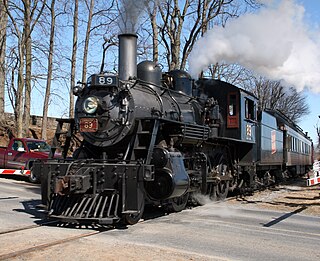
Under the Whyte notation for the classification of steam locomotives, 2-6-0 represents the wheel arrangement of two leading wheels on one axle, usually in a leading truck, six powered and coupled driving wheels on three axles and no trailing wheels. This arrangement is commonly called a Mogul.
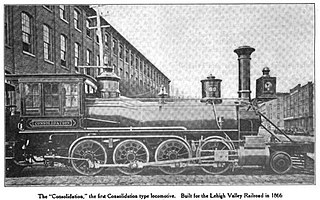
Under the Whyte notation for the classification of steam locomotives, 2-8-0 represents the wheel arrangement of two leading wheels on one axle, usually in a leading truck, eight powered and coupled driving wheels on four axles, and no trailing wheels. In the United States and elsewhere, this wheel arrangement is commonly known as a Consolidation, after the Lehigh and Mahanoy Railroad’s Consolidation, the name of the first 2-8-0.

In the Whyte notation for classifying the wheel arrangement of steam locomotives, an 0-8-8-0 is a locomotive with two sets of eight driving wheels and neither leading wheels nor trailing wheels. Two sets of driving wheels would give far too long a wheelbase to be mounted in a fixed locomotive frame, so all 0-8-8-0s have been articulated locomotives of the Mallet type, whether simple or compound. In the UIC classification, this arrangement would be, refined to Mallet locomotives, (D)D. The type was sometimes called Angus in North America.

Under the Whyte notation for the classification of steam locomotives, 0-10-0 represents the wheel arrangement of no leading wheels, ten powered and coupled driving wheels on five axles and no trailing wheels. In the United Kingdom, this type is known as a Decapod, a name which is applied to 2-10-0 types in the United States. In the United States, the type is known as ten-coupled.
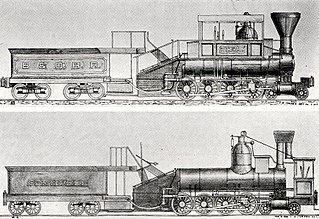
Under the Whyte notation for the classification of steam locomotives, 4-8-0 represents the wheel arrangement of four leading wheels on two axles, usually in a leading truck or bogie, eight powered and coupled driving wheels on four axles and no trailing wheels. In North America and in some other countries the type was usually known as the Twelve-wheeler.

Under the Whyte notation for the classification of steam locomotives, a 2-6-4 locomotive has two leading wheels, six coupled driving wheels and four trailing wheels.

In the Whyte notation for the classification of steam locomotive wheel arrangement, an 0-4-4-0 is a locomotive with no leading wheels, two sets of four driving wheels, and no trailing wheels. The arrangement is chosen to give the articulation of a locomotive with only the short rigid wheelbase of an 0-4-0, but with its weight spread across eight wheels, and with all the weight carried on the driving wheels; effectively a flexible 0-8-0. Articulated examples were constructed as Mallet, Meyer, BMAG and Double Fairlie locomotives and also as geared locomotives such as Shay, Heisler, and Climax types. A similar configuration was used on some Garratt locomotives, but it is referred to as 0-4-0+0-4-0. In the electric and diesel eras, the Bo-Bo is comparable and closest to the Meyer arrangement of two swivelling bogies.
Under the Whyte notation for the classification of steam locomotives, 0-8-0 represents the wheel arrangement of no leading wheels, eight powered and coupled driving wheels on four axles and no trailing wheels. Locomotives of this type are also referred to as eight coupled.
The Great Western Railway 3800 Class, also known as the County Class, were a class of 4-4-0 steam locomotives for express passenger train work introduced in 1904 in a batch of ten. Two more batches followed in 1906 and 1912 with minor differences. They were designed by George Jackson Churchward, who used standard components to produce a four-coupled version of his Saint Class 4-6-0s.
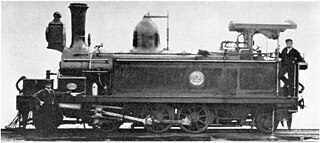
Under the Whyte notation for the classification of steam locomotives, 2-6-2 represents the wheel arrangement of two leading wheels, six coupled driving wheels and two trailing wheels. This arrangement is commonly called a Prairie.
Under the Whyte notation for the classification of steam locomotives, 0-8-2 represents the wheel arrangement of no leading wheels, eight powered and coupled driving wheels on four axles, and two trailing wheels on one axle.

Under the Whyte notation for the classification of steam locomotives, 0-4-2 represents the wheel arrangement with no leading wheels, four powered and coupled driving wheels on two axles and two trailing wheels on one axle. While the first locomotives of this wheel arrangement were tender engines, the configuration was later often used for tank engines, which is noted by adding letter suffixes to the configuration, such as 0-4-2T for a conventional side-tank locomotive, 0-4-2ST for a saddle-tank locomotive, 0-4-2WT for a well-tank locomotive and 0-4-2RT for a rack-equipped tank locomotive.
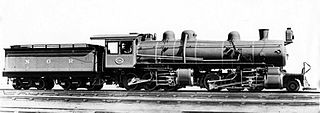
Under the Whyte notation for the classification of steam locomotives by wheel arrangement, 2-6-6-0 is a locomotive with one pair of unpowered leading wheels, followed by two sets of three pairs of powered driving wheels and no trailing wheels. The wheel arrangement was principally used on Mallet-type articulated locomotives. Some tank locomotive examples were also built, for which various suffixes to indicate the type of tank would be added to the wheel arrangement, for example 2-6-6-0T for an engine with side-tanks.
Under the Whyte notation for the classification of steam locomotives, 4-2-2-0 represents the wheel arrangement of four leading wheels on two axles, four independently driven driving wheels on two axles, and no trailing wheels. The arrangement became known as double single.
